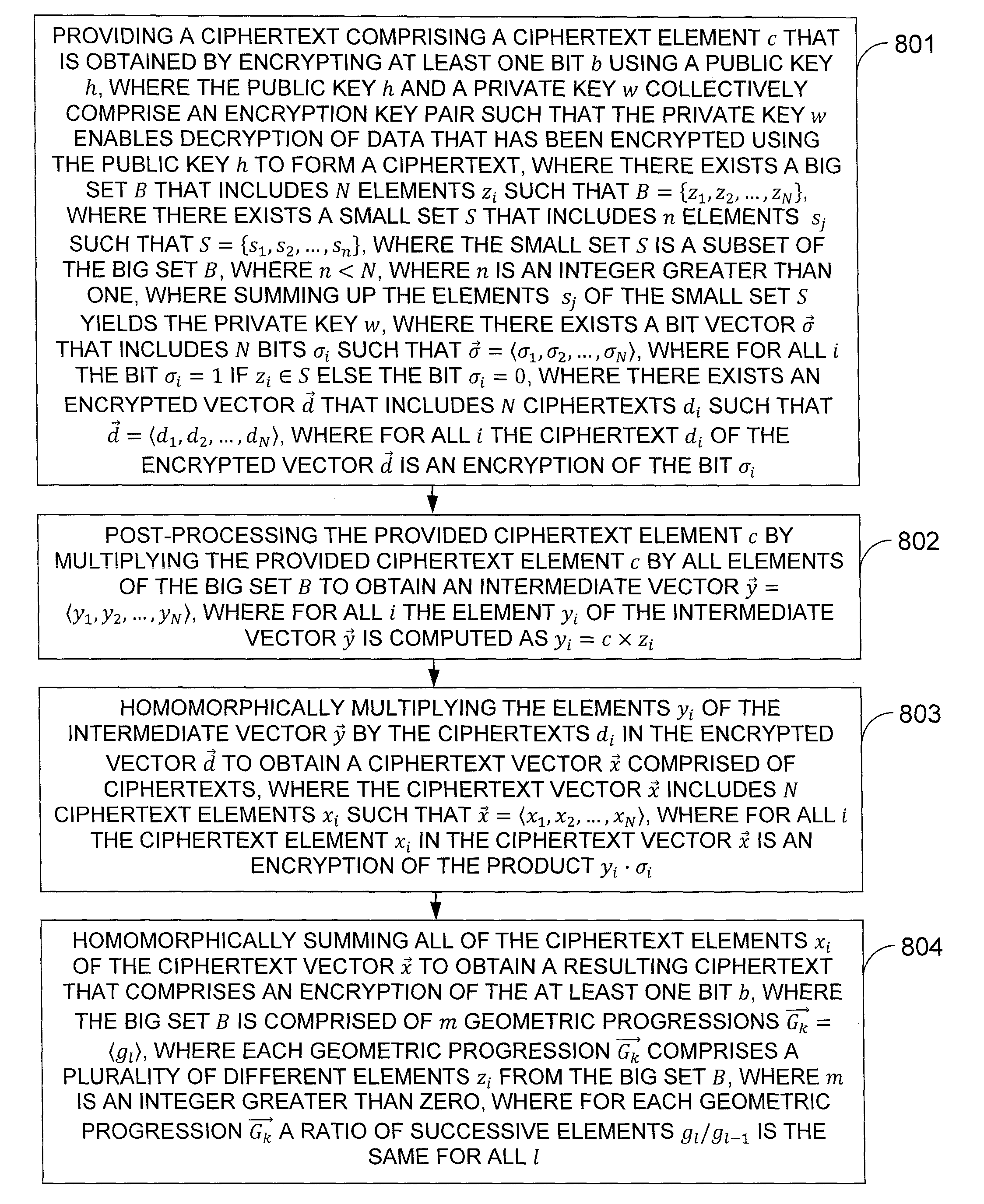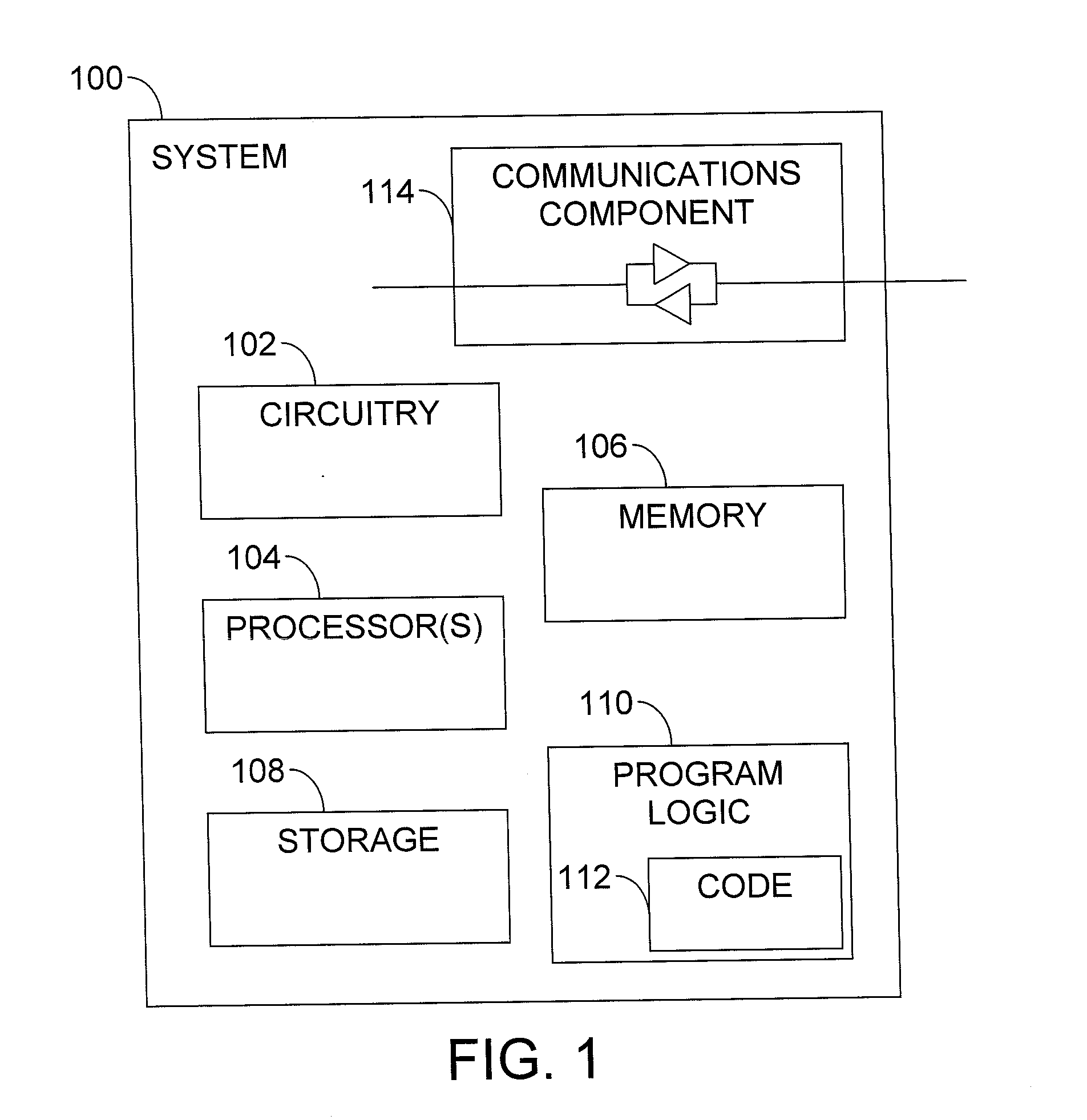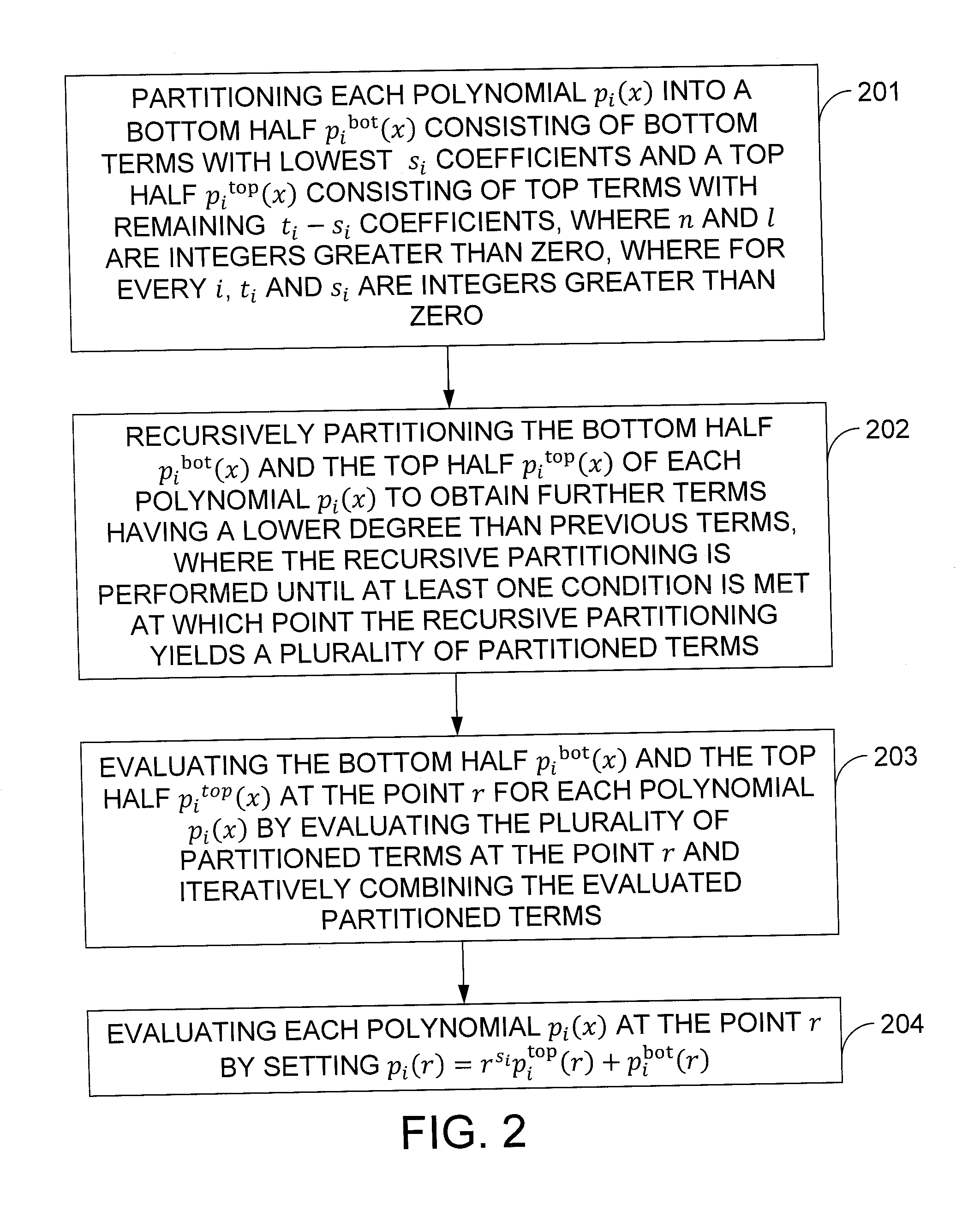[0005]In one exemplary embodiment of the invention, a method for homomorphic decryption, comprising: providing a ciphertext comprising a ciphertext element c that is obtained by encrypting at least one bit b using a public key h, where the public key h and a private key w collectively comprise an encryption key pair such that the private key w enables decryption of data that has been encrypted using the public key h to form a ciphertext, where there exists a big set B that includes N elements zi such that B={z1, z2, . . . , zN}, where there exists a small set S that includes n elements sj such that S={s1, s2, . . . , sn}, where the small set S is a subset of the big set B, where n<N, where n is an integer greater than one, where summing up the elements sj of the small set S yields the private key w, where there exists a bit vector {right arrow over (σ)} that includes N bits σi such that {right arrow over (σ)}=σ1, σ2, . . . , σN, where for all i the bit σi=1 if zi ∈ S else the bit σi=0, where there exists an encrypted vector {right arrow over (d)} that includes N ciphertexts di such that {right arrow over (d)}=d1, d2, . . . , dN, where for all i the ciphertext di of the encrypted vector a is an encryption of the bit σi; post-processing the provided ciphertext element c by multiplying the provided ciphertext element c by all elements of the big set B to obtain an intermediate vector {right arrow over (y)}=y1, y2, . . . yN, where for all i the element yi of the intermediate vector {right arrow over (y)} is computed as yi=c×zi; homomorphically multiplying the elements yi of the intermediate vector {right arrow over (y)} by the ciphertexts di in the encrypted vector {right arrow over (d)} to obtain a ciphertext vector {right arrow over (x)} comprised of ciphertexts, where the ciphertext vector {right arrow over (x)} includes N ciphertext elements xi such that {right arrow over (x)}=x1, x2, . . . , xN, where for all i the ciphertext element xi in the ciphertext vector {right arrow over (x)} is an encryption of the product yi·σi; and homomorphically summing all of the ciphertext elements xi of the ciphertext vector {right arrow over (x)} to obtain a resulting ciphertext that comprises an encryption of the at least one bit b, where the big set B is partitioned into n parts pj with each of the n parts pj having a plurality of different elements from the big set B, where the elements sj of the small set S consist of one element from each of the n parts pj.
[0006]In another exemplary embodiment of the invention, a computer readable storage medium tangibly embodying a program of instructions executable by a machine for performing operations for homomorphic decryption, said operations comprising: providing a ciphertext comprising a ciphertext element c that is obtained by encrypting at least one bit b using a public key h, where the public key h and a private key w collectively comprise an encryption key pair such that the private key w enables decryption of data that has been encrypted using the public key h to form a ciphertext, where there exists a big set B that includes N elements zi such that B={z1, z2, . . . , zN}, where there exists a small set S that includes n elements sj such that S={s1, s2, . . . , sn}, where the small set S is a subset of the big set B, where n<N, where n is an integer greater than one, where summing up the elements sj of the small set S yields the private key w, where there exists a bit vector {right arrow over (σ)} that includes N bits σi such that {right arrow over (σ)}=σ1, σ2, . . . , σN, where for all i the bit σi=1 if zi ∈ S else the bit σi=0, where there exists an encrypted vector {right arrow over (d)} that includes N ciphertexts di such that {right arrow over (d)}=d1, d2, . . . , dN, where for all i the ciphertext di of the encrypted vector {right arrow over (d)} is an encryption of the bit σi; post-processing the provided ciphertext element c by multiplying the provided ciphertext element c by all elements of the big set B to obtain an intermediate vector {right arrow over (y)}=y1, y2, . . . , yN, where for all i the element yi of the intermediate vector {right arrow over (y)} is computed as yi=c×zi; homomorphically multiplying the elements yi of the intermediate vector {right arrow over (y)} by the ciphertexts di in the encrypted vector {right arrow over (d)} to obtain a ciphertext vector {right arrow over (x)} comprised of ciphertexts, where the ciphertext vector {right arrow over (x)} includes N ciphertext elements xi such that {right arrow over (x)}=x1, x2, . . . , xN, where for all i the ciphertext element xi in the ciphertext vector {right arrow over (x)} is an encryption of the product yi·σi; and homomorphically summing all of the ciphertext elements xi of the ciphertext vector {right arrow over (x)} to obtain a resulting ciphertext that comprises an encryption of the at least one bit b, where the big set B is partitioned into n parts pj with each of the n parts pj having a plurality of different elements from the big set B, where the elements sj of the small set S consist of one element from each of the n parts pj.
[0007]In a further exemplary embodiment of the invention, a method for homomorphic decryption, comprising: providing a ciphertext comprising a ciphertext element c that is obtained by encrypting at least one bit b using a public key h, where the public key h and a private key w collectively comprise an encryption key pair such that the private key w enables decryption of data that has been encrypted using the public key h to form a ciphertext, where there exists a big set B that includes N elements zi such that B={z1, z2, . . . , zN}, where there exists a small set S that includes n elements sj such that S={s1, s2, . . . , sn}, where the small set S is a subset of the big set B, where n<N, where n is an integer greater than one, where summing up the elements sj of the small set S yields the private key w, where there exists a bit vector {right arrow over (σ)} that includes N bits σi such that {right arrow over (σ)}=σ1, σ2, . . . ,σN, where for all i the bit σi=1 if zi ∈ S else the bit σi=0, where there exists an encrypted vector {right arrow over (d)} that includes N ciphertexts di such that {right arrow over (d)}=d1, d2, . . . , dN, where for all i the ciphertext di of the encrypted vector {right arrow over (d)} is an encryption of the bit σi; post-processing the provided ciphertext element c by multiplying the provided ciphertext element c by all elements of the big set B to obtain an intennediate vector {right arrow over (y)}=y1, y2, . . . , yN, where for all i the element yi of the intermediate vector {right arrow over (y)} is computed as yi=c×zi; homomorphically multiplying the elements yi of the intermediate vector {right arrow over (y)} by the ciphertexts di in the encrypted vector {right arrow over (d)} to obtain a ciphertext vector {right arrow over (x)} comprised of ciphertexts, where the ciphertext vector {right arrow over (x)} includes N ciphertext elements xi such that {right arrow over (x)}=x1, x2, . . . , xN, where for all i the ciphertext element xi in the ciphertext vector {right arrow over (x)} is an encryption of the product y1·σi; and homomorphically summing all of the ciphertext elements xi of the ciphertext vector {right arrow over (x)} to obtain a resulting ciphertext that comprises an encryption of the at least one bit b, where the big set B is comprised of m geometric progressions {right arrow over (Gk)}=gl, where each geometric progression {right arrow over (Gk)} comprises a plurality of different elements zi from the big set B, where m is an integer greater than zero, where for each geometric progression {right arrow over (Gk)} a ratio of successive elements gl / gl−1 is the same for all l.
 Login to View More
Login to View More  Login to View More
Login to View More 


